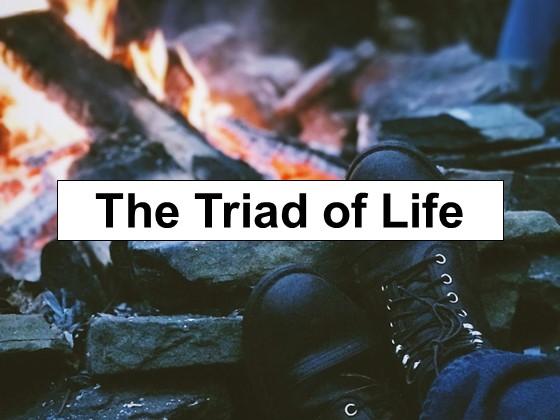I know we’re moving away from cold weather in the northern hemisphere, but I recently watched a video that briefly mentioned the primary reasons we humans could expand away from warmer climates near the equator to virtually everywhere else. Their reasons were simple: fire, clothing, and shelter.
Sure, there was a lot more to our ability to expand, including agriculture, better weapons, medicines, and a hundred other reasons. But regarding not freezing to death, it’s about the things that keep you warm. And, since we’re all preppers here, it’s wise to plan.
That said, these three specific needs—fire, clothing, and shelter—do more for us than just keep us warm. For instance, fire was probably the first light source humans used. We employ campfires to keep animals and bugs away. Humans still use fire to cook food, so it’s more easily digestible. Some of us use it dry out wet clothing; others use it for food preservation, such as drying meat. If you’re stranded, you might signal with a campfire. And there’s this thing fire does to water which makes it safe to drink…it’s called boiling. Add your thoughts to the comments below if I missed something crucial.
Clothing is crucial, too. I’ve long believed that the human body, if exposed to temperatures of around 55 degrees Fahrenheit (I’ve seen it stated as high as 68 degrees) when nude, of course, could die of hypothermia. That’s not very cold. In fact, I believe the nighttime temperatures where I live in Kansas City have been in the fifties all week, even though the daytime temps reached near 80. It wouldn’t be until the summer that a nude human is expected to survive all day and night without clothing. That makes for a difficult nine other months, lol.
But keeping from freezing to death isn’t the only purpose of clothing. Clothing, of course, keeps us dry. When we used to live in western Washington state, for example, we rarely left the house without a rain jacket because it sprinkled so often. If you’re unaware, being wet increases your risk of hypothermia substantially because of wicking away body heat. Windy environments are problematic, too, but not as bad as being wet. Put them both together and that’s a serious problem.
Clothing helps during hotter months, too. Hats keep us from getting sunburned. Short-sleeved shirts and shorts help our bodies evaporate moisture. Some clothing keeps bugs away. Shoes, as you well know, keep our feet from being torn up on rocks and thorny vegetation. Gloves protect our hands from many problems. I could go on a rant about personal protective equipment, such as eyeglasses, but I’ll spare you for now. Clothing serves many purposes besides keeping warm. That said, clothing is easily the most important aspect of keeping warm in most situations.
Lastly, we come to shelter. There are so many primitive shelter designs using a variety of materials that it still amazes me just how ingenious people are when their lives depend on it. And now we’ve built larger shelters than most of us could ever claim to need. They’re so big, in fact, that we fill them with stuff we know we don’t need! (Hopefully, it’s more survival gear.)
No doubt that shelters protect us from bad weather, especially rain and snow. But there’s something to be said for the security that a shelter might provide, even if it’s only imaginary. Shelters, even a makeshift one from tree branches and pine needles, are a place to call home. It’s where we come back to after a day of exploration. And it’s where we build a life.
Put together, fire, clothing, and shelter are the triad of life, if I may be so bold. Yes, we require a lot more to survive, but we need the triad of life to thrive.
With that in mind, do you have the supplies and skills to start a fire? Do you know how to start a fire from scratch? Even if you know how, do you have copious amounts of matches, lighters, and fire starters? Do you have firewood and kindling ready to use? Is there a safe place to start a fire outdoors? Do you know how to start a fire using unconventional methods? (Search YouTube for “how to start a fire without matches” and you’ll find plenty of ideas.)
As for clothing, do you have clothing to keep you from freezing to death in case the power goes out for extended periods of time? Does the rest of your family? What if family, friends, or neighbors show up? Do you have clothing outdoors for bad weather? What if you had to be outside doing, Heaven-forbid, manual labor in bad weather? Would you become soaked to the bone? Would your fingers and toes go numb? What if you had to evacuate? Do you have good hiking shoes or boots?
Regarding shelter, what would you do if your house were damaged to where it’s uninhabitable? Could you use a vehicle for shelter? What about a detached garage or shed? Do you have a tent or even a canopy? Could you erect tarps to keep the rain off your head and to block the wind? Do you have the skills to create a primitive shelter using resources around your home? Are there alternative places you could go?
These are the questions to ask yourself. Don’t merely brush them off; go check! And if your answers aren’t, “Yeah, I’m good,” then I suggest you fill the gaps because disasters never wait for you to be ready.

Leave a Reply